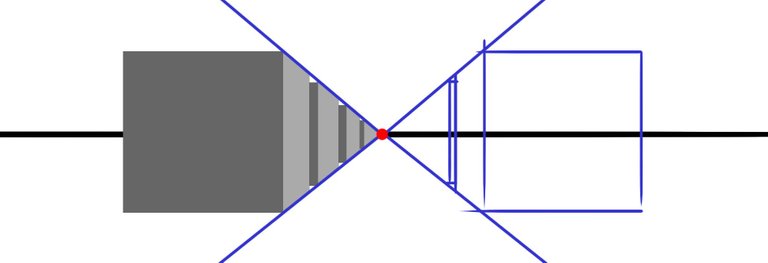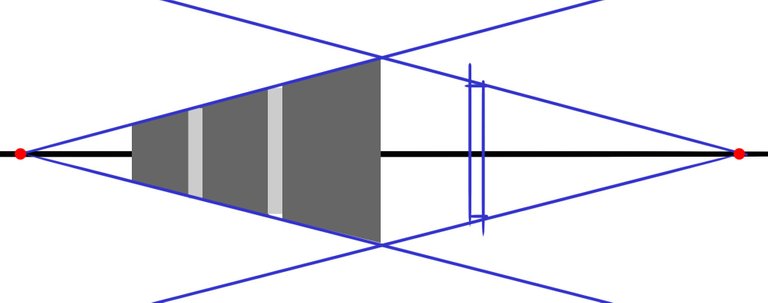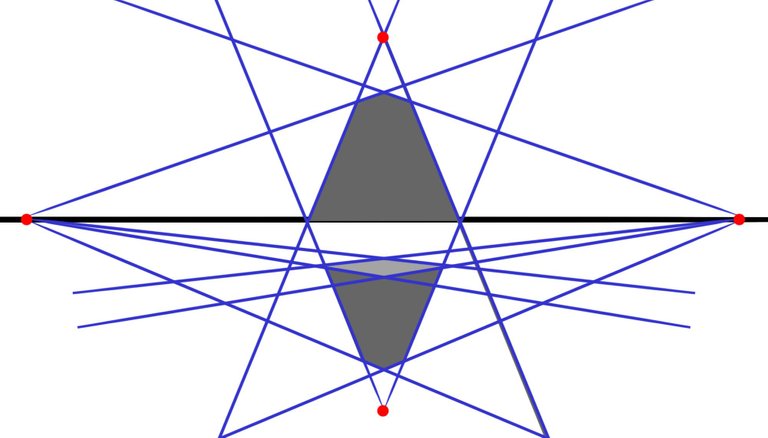

Prospettiva geometrica - Tutorial sulla pittura digitale #3
La prospettiva è un metodo per realizzare immagini spaziali geometriche viste da uno spettatore a occhi fermi. È un processo grafico che il cervello riesce a decodificare e leggere come un’indicazione sullo spazio e sulla profondità. La prima cosa da fare quando si inizia un disegno in prospettiva geometrica è stabilire la linea dell’orizzonte, ovvero la linea immaginaria che passa costantemente a livello dell’occhio, parallela al terreno. Sulla linea dell’orizzonte si collocano i punti di fuga, ovvero i punti dove convergono le linee degli elementi messi in prospettiva.

Geometric perspective - Digital painting tutorial #3
Perspective is a method for creating geometric spatial images viewed by a spectator with steady eyes. It is a graphic process that the brain can decode and read as an indication of space and depth. The first thing to do when starting a painting in geometric perspective is to establish the horizon line, which is the imaginary line that constantly passes at eye level, parallel to the ground. On the horizon line there are vanishing points, ie the points where the lines of the elements in perspective converge.


A seconda del numero di punti di fuga presenti, si possono avere diversi tipi di prospettiva geometrica.

Depending on the number of vanishing points, we can have different types of geometric perspective.


La prospettiva centrale: c’è un solo punto di fuga verso il quale convergono le linee di profondità degli elementi. Le linee orizzontali al terreno rimangono tali, ma in presenza di più elementi si avvicinano l’una a l’altra. Anche le linee verticali e perpendicolari al terreno rimangono tali, ma allontanandosi decrescono in altezza e si avvicinano.

Central perspective: there is only one vanishing point towards which the lines of depth of the elements converge. The horizontal lines to the ground remain such, but in the presence of several elements they get closer. Even the vertical lines and perpendicular to the ground remain such, but moving away they decrease in height and get closer.



La prospettiva a 2 punti di fuga: ci sono 2 punti di fuga e lo spettatore ha davanti l’angolo dell’elemento in primo piano invece che una faccia. Le linee verticali rimangono perpendicolari al terreno come nella prospettiva centrale.

2 vanishing point perspective: there are 2 vanishing points and the viewer is in front of a corner of the foreground element instead of its face. The vertical lines remain perpendicular to the ground as in the central perspective.



La prospettiva a 3 punti di fuga: alla prospettiva a 2 punti se ne aggiunge un terzo che sta sopra (dando l’impressione di guardare l’elemento dal basso verso l’alto) o sotto la linea dell’orizzonte (dando l’impressione che stiamo guardando l’elemento dall’alto verso il basso). Le linee verticali non saranno più perpendicolari al terreno ma convergeranno verso il terzo punto di fuga.

3 vanishing point perspective: to the 2 point perspective you add a third that is above (giving the impression of looking at the element from the bottom up) or below the horizon (giving the impression that we are looking at the element from top to bottom). The vertical lines will no longer be perpendicular to the ground but will converge towards the third vanishing point.


Fundamentals of learning how to paint environments - Digital painting tutorial #1 [IT/EN]
Painting with selections - Digital painting tutorial #2 [IT/EN]